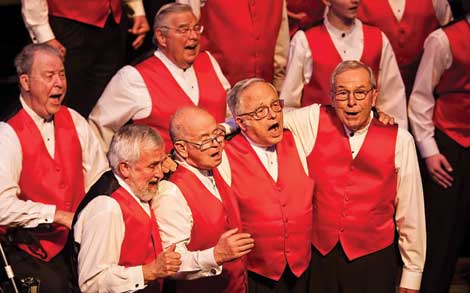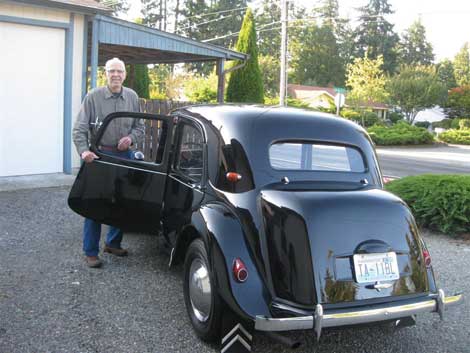Life’s a song for the Harmony Kings
Art Graham refers to the Harmony Kings as a continuing education program.
The all-male singing group from Federal Way performs on a regular basis, traveling to competitions and appearing locally. Their largest performance takes place in June at the Auburn Performing Arts Center, and the 40-plus members sing at senior facilities and public events throughout the year.
The group is a chapter of the Barbershop Harmony Society and is celebrating its 53rd year.
“We have men singing with us who were in the original group, and our ages range from 18 to men in their 80s,†said Graham, who joined in 1997 and is treasurer for the group.
“Most of our men come to us because they sang somewhere before, maybe church or school. We have very few trained musicians that have degrees,†said Graham.
The singers rehearse weekly, and Graham says one of the most important benefits of belonging to the Harmony Kings is the friendships that are formed. The mid-rehearsal break is an important part of the evening.
“We see the same bunch of guys, and at the break we have coffee and cookies and socialize and do chapter business. But what I’ve felt is we have something more than just being a fraternal organization,†he said.
The singing group is always looking for new recruits, and anyone is welcome. Their website says that every Tuesday night is guest night, with this note: “Remember, there is always room on the risers for you in Federal Way.â€
“If they want to join, they do have to audition, but mostly they just have to see if they can hold a pitch and sing with other harmony parts around them. It is not a real rigorous thing,†Graham said, adding, “A cappella is an important part.
“The style, the way the cords ring because of the arrangements really gets under your skin and makes you want to do it.â€
Karen Frerichs is the director of The Harmony Kings. Her day job is to teach high school choir at Auburn Mountain View High School.
“It is very energizing to be with (the Kings) and to help them become better singers and encourage them to enjoy the fellowship,†said Frerichs.
Weekly rehearsals last about three hours.
In addition to performing locally throughout the community, Frerichs said that if they are eating at a restaurant and customers realize they are a singing group and ask them to sing, they are more than happy to perform right on the spot.
“These guys are like big brothers to me,†said Frerichs, who has acted as director since 2008.
Seventy-year-old Graham said performing is a healthy outlet, in addition to being a great way to socialize with friends.
“Music speaks to a different part of the brain than a lot of other things do. Even primitive cultures have some sort of music and there is part of us as humans that like music and like to create music,†he explained.
The Harmony Kings visit local schools and enjoy interacting with the high school classes.
“They love it because they understand it and the kids gather and sing tags. You can teach four guys the parts in a hurry, and they like to hear what they can do with their voices,†he said.
The Harmony Kings are preparing for Valentine’s Day performances. The group will be available to deliver valentines and roses.
Anyone interested in joining the Harmony Kings or who would like to send an extremely unique valentine can contact the group at harmonykings.org.


